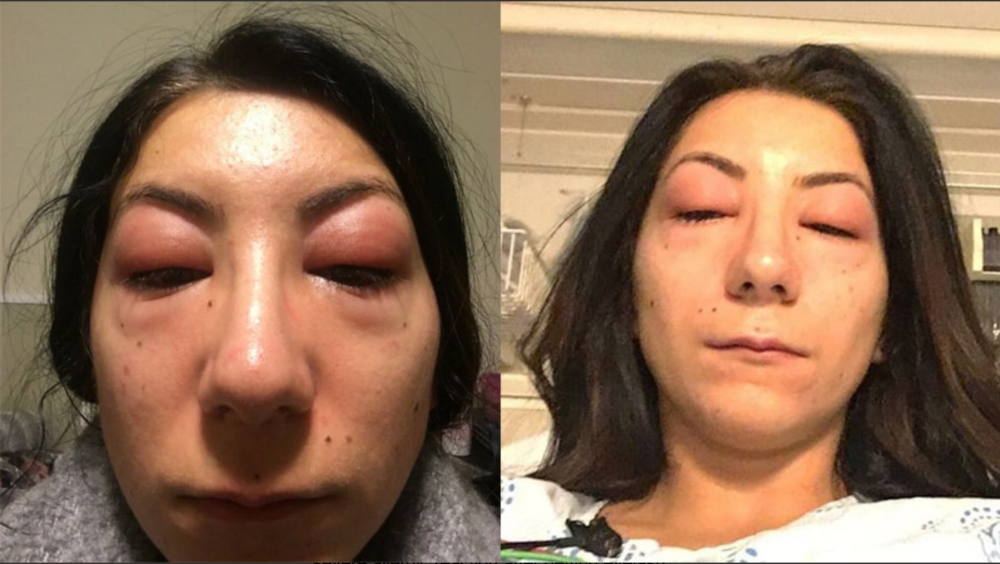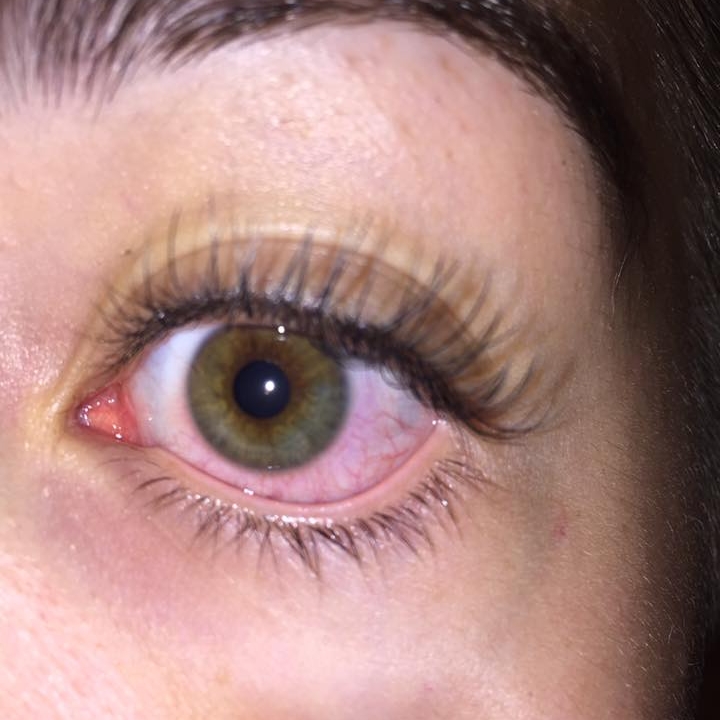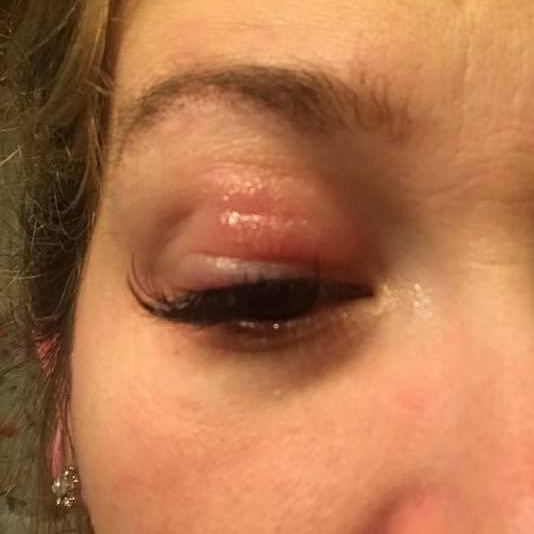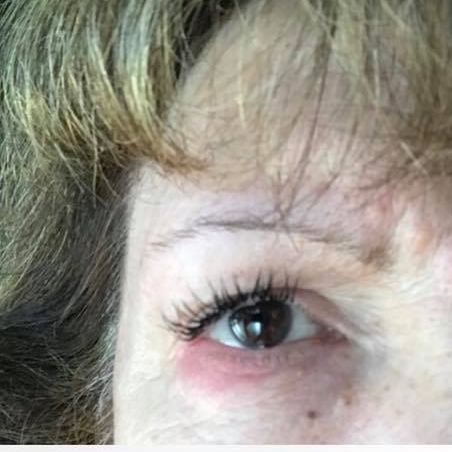What to Ask: Eyelash Extension Allergies and Reactions

Photo from CTV news article on lash reaction. Click photo to be taken to article
When we hear stories in the news about horrible reactions to lash extensions, we can be fooled into thinking that it's a simple equation of lash extensions + lash glue = allergic reaction. But the equation isn't that easy. There are so many factors to consider when unpacking why someone got a reaction after a lash treatment. Here is a list of questions to ask when you hear or read about a person having an allergic reaction to lash extensions.
Is it an allergic reaction, a sensitivity, or an infection?
If artists are sharing tools and not practicing proper sanitization and infection prevention measures, it could result in an outbreak of pink eye or other infections. These outbreaks are characterized by multiple clients complaining of similar symptoms, such as pink, irritated eyes, in a short span of time.
Blepharitis is another infection that is common in clients who don't practice proper hygiene and aftercare. This condition is caused by an overgrowth of bacteria in the lash line and is characterized by visible crusties throughout the lash line, redness, itchiness, and a gritty feeling, like sand in the eye, when blinking.

Example of possible blepharitis
Pink eye and blepharitis must be diagnosed by an eye doctor or ophthalmologist. Estheticians and cosmetologists do not have the license to diagnose these conditions and should never make any treatment recommendations to clients. If a client is experiencing any reaction, the service provider should only refer them to see a licensed eye doctor or specialist.
It could be a chemical burn.Chemical burns can happen to people who are sensitive to fumes from cyanoacrylate-based adhesives. This reaction can occur because of poor gel pad placement. If the gel pad is placed too high on the lash line, it can ride up into the eye and cause bruising or micro-tears in the membrane that can be painful and may be mistaken for an allergic reaction. If the gel pad gets placed so low that it drags the lash line down, it can leave the eye open a bit. This opening allows vapors from the adhesive curing process to enter the eye and result in a chemical burn, producing sore, red eyes that can look and feel like pink eye.

Example of possible chemical burn or poor gelpad placement
We recommend using a lash mirror to check the gel pad positioning and make sure that the eyes are sealed throughout the application. If the pad placement is correct, but the eyes are still open a bit, artists can use a gel pad to cover the top eyelid which keeps the lid in a closed and relaxed position during the service. If a client does have a sensitivity to lash adhesive fumes/vapors, the artist should consider cleansing after the service. Now, this may seem taboo to cleanse after the service, but you don't have to take our word for it. We asked Doug Schoon, the renowned chemist and cyanoacrylate expert, who gave us the breakdown of why cleansing the lashes after the service helps the adhesive to cure more quickly, which can help prevent a reaction from forming.
Contrary to popular belief, washing will NOT slow down or prevent further curing, in fact, this will hasten further curing. So, a full cure will be achieved more quickly if the lashes are washed. So, there is no downside and several advantages to gently washing the lashes before the client leaves the salon. However, be sure you to do NOT get the adhesive wet with water before it hardens since this can lead to shock curing, which can weaken the bond. That’s why it is best to wait at least 5 minutes after the adhesive is set."
A true sign of an allergic reaction is swelling and inflammation of the eye and eyelids, it is also in both eyes rather than one eye.

Example of possible allergic reaction
As of 2015, .3% of people reported a reaction to medical adhesives, and that's over 2 years ago and doesn't count the thousands who have never reported a reaction.
It seems like it could be an allergy, so what should you ask now?
Did the artist do a consultation and patch test?
All new clients, whether they've had lashes in the past or not, should receive a thorough consultation and the option to do a patch test. Consultations can take 20-30 minutes and allow the artist to go over any contraindications, such as pink eye, LASIK surgery, adhesive allergies, and more. Knowing these contraindications beforehand will enable the client and the artist to make an informed decision on whether lash extensions are the best service for them.
The artist can also look at the client's lashes and determine what style of extensions will look best and make sure that the client's expectations aren't set higher than what their lashes can handle.
A patch test is when you apply a few lashes on each eye. Always ensuring that the extension is placed on the natural lash, never on the skin. You then wait 24-48 hours and if no reaction occurs, you can continue with the scheduled service. If a client refuses a patch test, the artist should always have them sign off on the consent form so that the artist is not held responsible for a reaction, if one should occur. Reactions are more likely to happen when artists aren't going through these good measures.
What products did the artist use?
Quality products give you quality results. If an artist is buying their products from eBay or a third party that isn't rotating their stock, then the artist has no guarantee that their adhesive is fresh and within the recommended dates of use. At Lash Affair we rotate our batches of adhesive every month to ensure that the lash artists purchasing from us are receiving the best lash products and can assure their clients that the products they are using are fresh and high quality. We recommend our clients replace their opened adhesive within 4-5 weeks to preserve the integrity of the adhesive.
How was the artists adhesive being stored?
Ten years ago when lash extensions were starting to become popular, it was common knowledge that lash adhesive keeps best in the fridge or freezer while in between uses. Advances in the manufacturing of adhesives have rendered those previous methods outdated. Storing lash glue in the fridge can result in condensation collecting inside of the bottle and compromising it. This condensation results in the adhesive having increased fumes and/or inhibits it from functioning. Overall temperature fluctuations can have a negative affect on the adhesive. Leaving the cap off the bottle, or storing on its side in a drawer can have similar results. Instead, these sensitive chemicals should be stored in a cool, dry place and kept upright, in an airtight container such as the Love Shack
What season was it?
You've probably heard of how seasons can affect lash retention, such as Fall and Spring lash shed. But did you know that seasons can change how a person reacts to lash adhesive? When an artist is lashing, the glue dot is curing on the surface that they are working off. As each lash extension is placed on a natural lash the curing process is happening there as well. Curing is the chemical reaction that occurs as the cyanoacrylate molecules meet the molecules in the air. As the adhesive turns from liquid to a solid, gas is released. These gas vapors release into the air, and they fall onto the eyelids and surrounding skin. In the winter, the skin is chapped and dry, leaving small cracks which can make the skin more susceptible to experiencing an allergic reaction or sensitivities. If a client has dry skin or if the season is causing it, we recommend you prep the client's eye area with a barrier cream and cleanse the client after the service using the TLC Cleanser which is sulfate free and won't strip the skin or lashes of natural moisture.

Example of possible lifted skin from gelpad, tape, or irritation from gas vapors on dry skin.
It's important to consider these questions when trying to understand and prevent allergic reactions on lash clients. It's not a simple equation, in fact, there can be a combination of the above variables that result in a reaction. So, stick with the science method, ask questions, and don't believe the hype. We need all of you out there spreading lash love and not lash fear!
LASH AFFAIR


Leave a comment